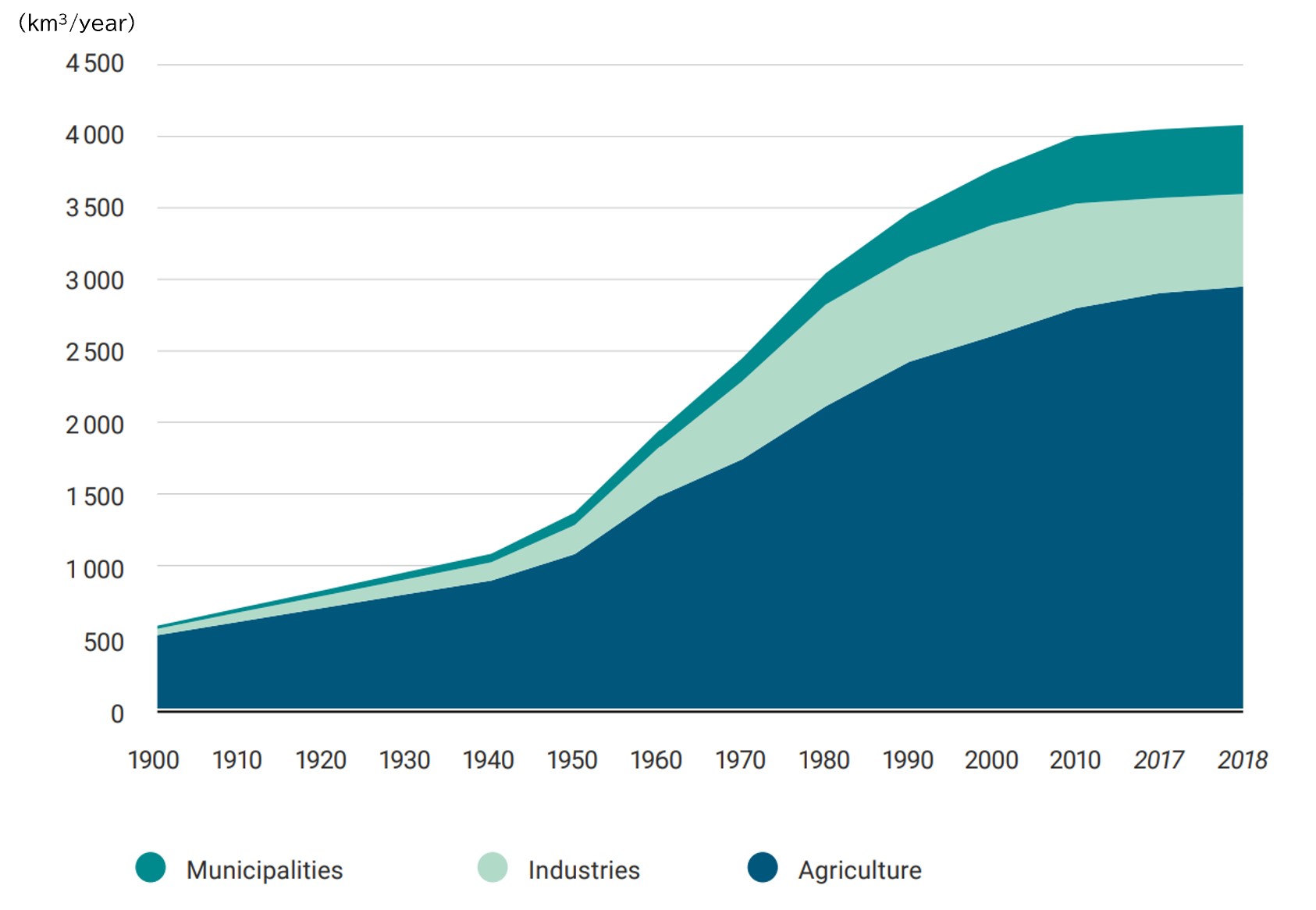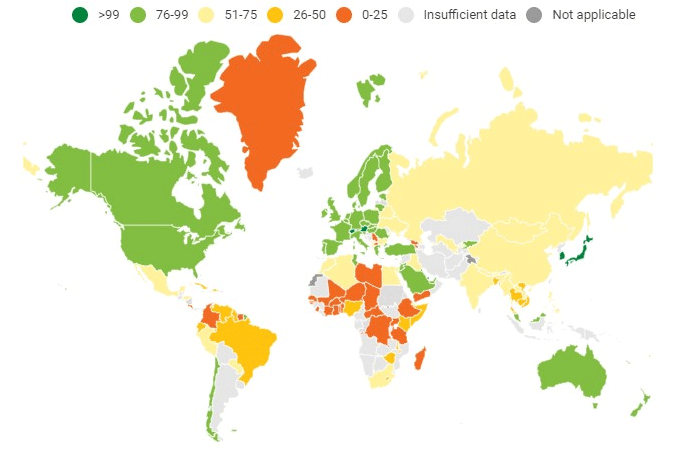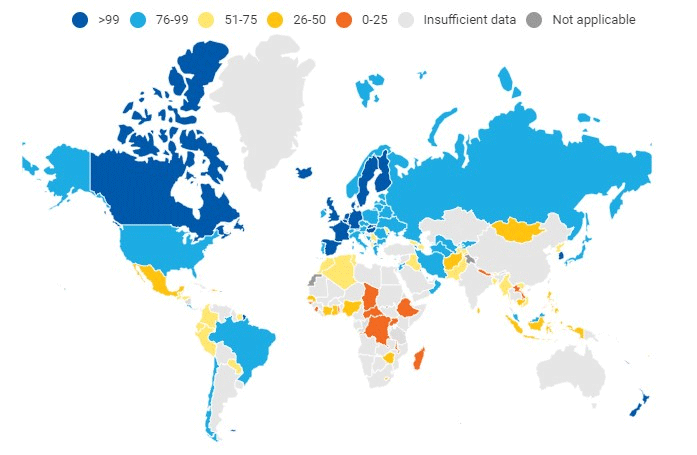水質汚染
地球上の水の97.5%は海水です。
残りの2.5%が淡水ですが、このうち、河川や湖沼から人間が利用できる淡水は約0.01%(10万km3)しかありません。
このように、人間が資源として利用できる水のことを、水資源と言います。

動画「公平な水の分配と管理に向けて」より
人口の増加に伴い、水の使用量は大幅に増加しました。
世界の水使用量のうち、約70%は農業用水(主に灌漑農業)、残りの2割近くが工業用水として使われています。
世界の取水量

出典:UNESCO (2023)
人間が利用した後、適切な処理がなされず排出された水は、水質汚染として多くの人々の生活や健康に影響を与えています。
世界中の約4分の1の人が、安全な飲料水を得ることができません。
衛生面での問題を抱えている地域(2022年)

出典:UNICEF and WHO (2023)
また、世界の人口の4割以上が、衛生状態が悪い地域で暮らしています。
安全な飲み水の世界地図(2022年)

出典:UNICEF and WHO (2023)
このような地域は新興国や途上国に偏っています。
飲み水へのアクセスや衛生状態は年々向上していますが、SDGsのターゲットである2030年までに、世界中で基本的な衛生状態を確保するには、これまでの2倍、安全に管理された衛生状態になるには4倍の努力が必要とされています。(下図)
世界の衛生状態の変化

出典:UNICEF and WHO (2020)
(文:大西有子)
参考文献
United Nations Children’s Fund (UNICEF) and World Health Organization (WHO), 2020, State of the World’s Sanitation: An urgent call to transform sanitation for better health, environments, economies and societies.
https://www.unicef.org/reports/state-worlds-sanitation-2020
UNICEF and WHO, 2023, Progress on household drinking water, sanitation and hygiene 2000–2022: Special focus on gender.
https://data.unicef.org/resources/jmp-report-2023/
United Nations Educational, Scientific and Cultural Organization (UNESCO), 2023, The United Nations World Water Development Report 2023: partnerships and cooperation for water.
https://www.unesco.org/reports/wwdr/2023/en/download





